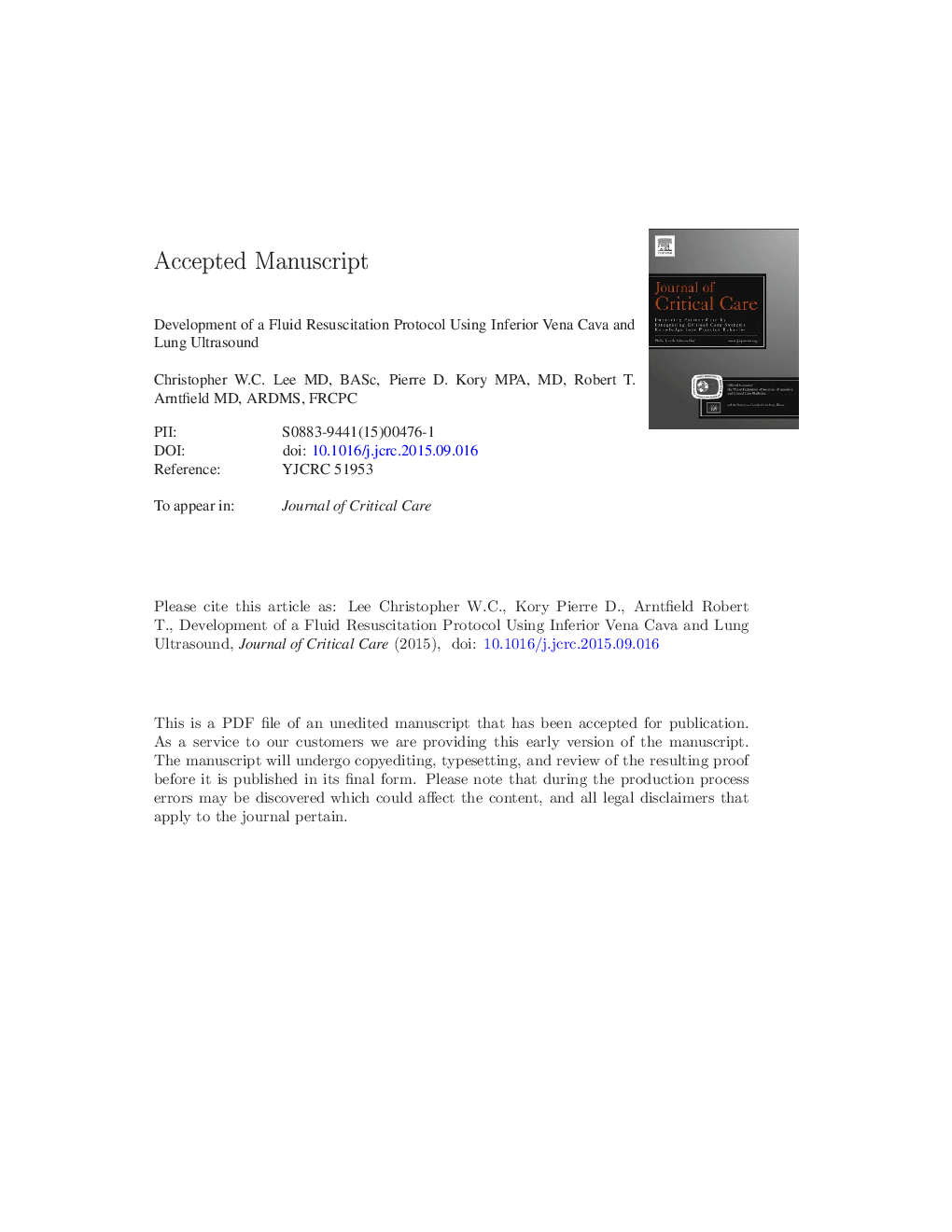| Article ID | Journal | Published Year | Pages | File Type |
|---|---|---|---|---|
| 5885031 | Journal of Critical Care | 2016 | 20 Pages |
Abstract
Appropriate fluid resuscitation has been a major focus of critical care medicine since its inception. Currently, the most accurate method to guide fluid administration decisions uses “dynamic” measures that estimate the change in cardiac output that would occur in response to a fluid bolus. Unfortunately, their use remains limited due to required technical expertise, costly equipment, or applicability in only a subset of patients. Alternatively, point-of-care ultrasound (POCUS) has become widely used as a tool to help clinicians prescribe fluid therapy. Common POCUS applications that serve as guides to fluid administration rely on assessments of the inferior vena cava to estimate preload and lung ultrasound to identify the early presence of extravascular lung water and avoid fluid overresuscitation. Although application of these POCUS measures has multiple limitations that are commonly misunderstood, current evidence suggests that they can be used in combination to sort patients among 3 fluid management categories: (1) fluid resuscitate, (2) fluid test, and (3) fluid restrict. This article reviews the pertinent literature describing the use of inferior vena cava and lung ultrasound for fluid responsiveness and presents an evidence-informed algorithm using these measures to guide fluid resuscitation decisions in the critically ill.
Related Topics
Health Sciences
Medicine and Dentistry
Anesthesiology and Pain Medicine
Authors
Christopher W.C. MD, BASc, Pierre D. MPA, MD, Robert T. MD, FRCPC,
